Aquatint is an intaglio printmaking technique, but is used to create tonal effects rather than lines. Intaglio refers to printing and printmaking techniques in which the image is incised into a surface, and the incised line or sunken area holds the ink.
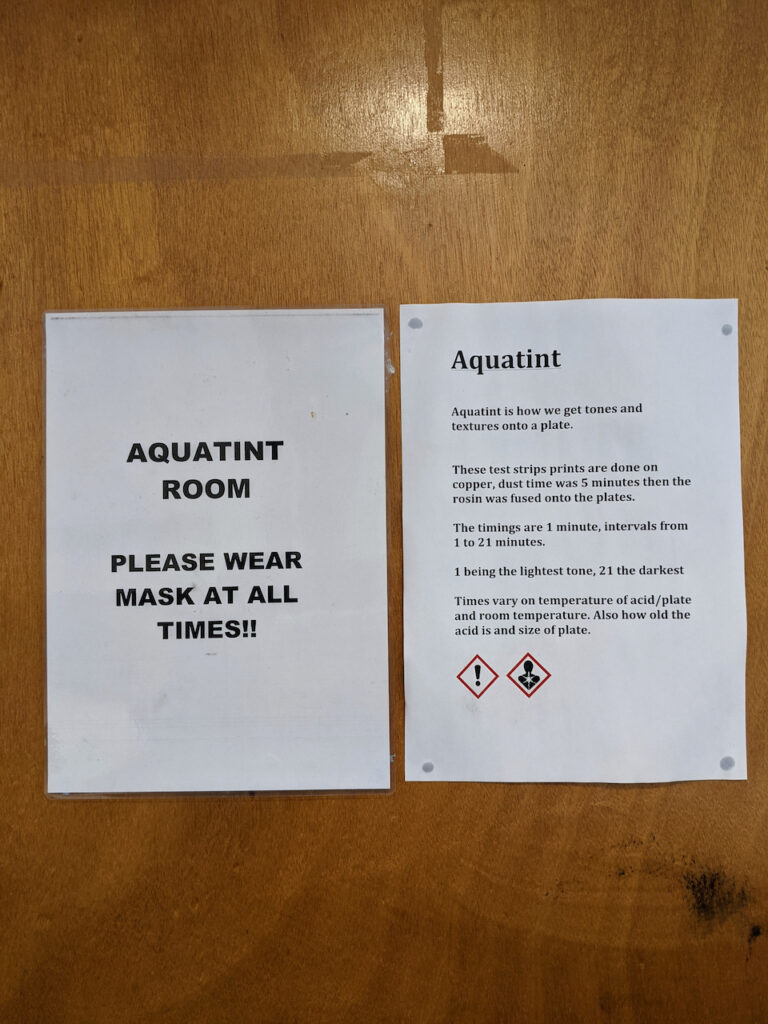
Fine particles of acid-resistant material, such as powdered rosin, are attached to a printing plate by heating. The plate is then immersed in an acid bath, just like etching. The acid eats into the metal around the particles to produce a granular pattern of tiny indented rings. These hold sufficient ink to give the effect of an area of wash when inked and printed. The extent of the printed areas can be controlled by varnishing those parts of the plate to appear white in the final design. Gradations of tone can be achieved by varying the length of time in the acid bath; longer periods produce more deeply-bitten rings, which print darker areas of tone. The technique was developed in France in the 1760s, and became popular in Britain in the late eighteenth and early nineteenth centuries. It is often used in combination with other intaglio techniques. (TATE)
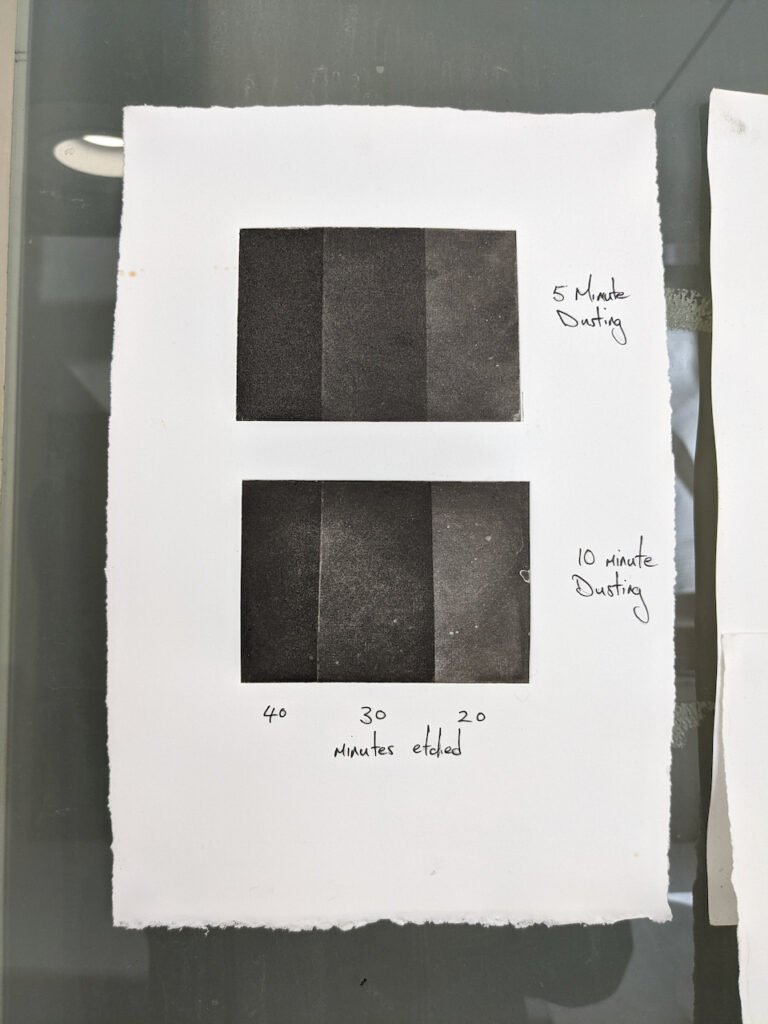
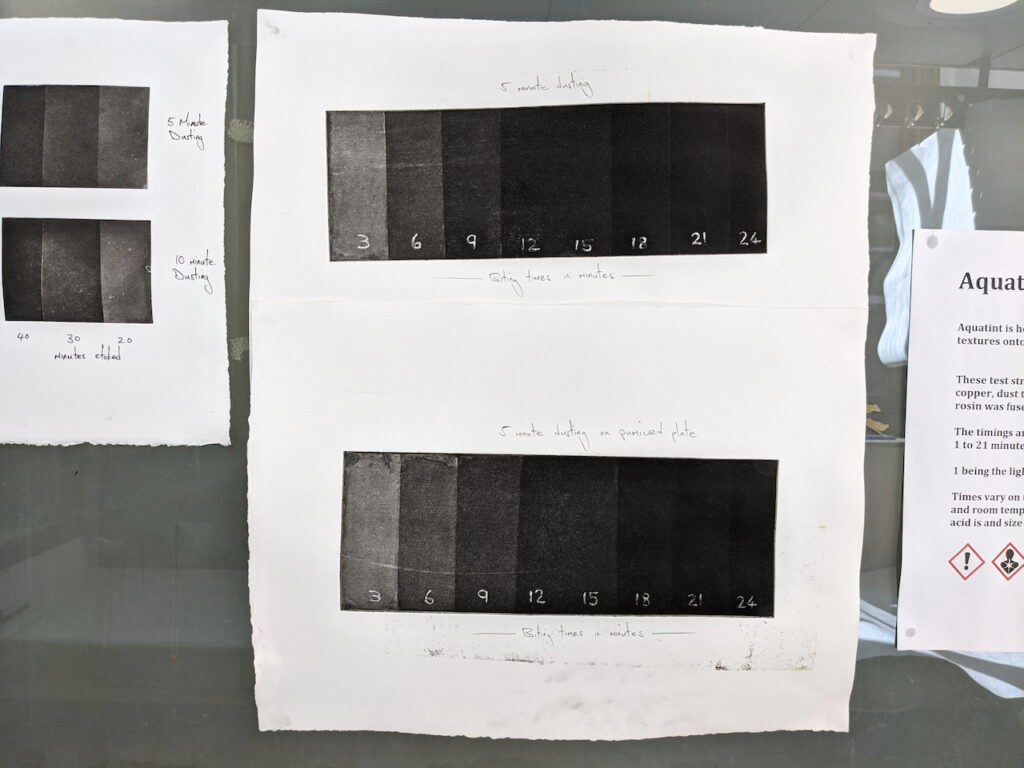
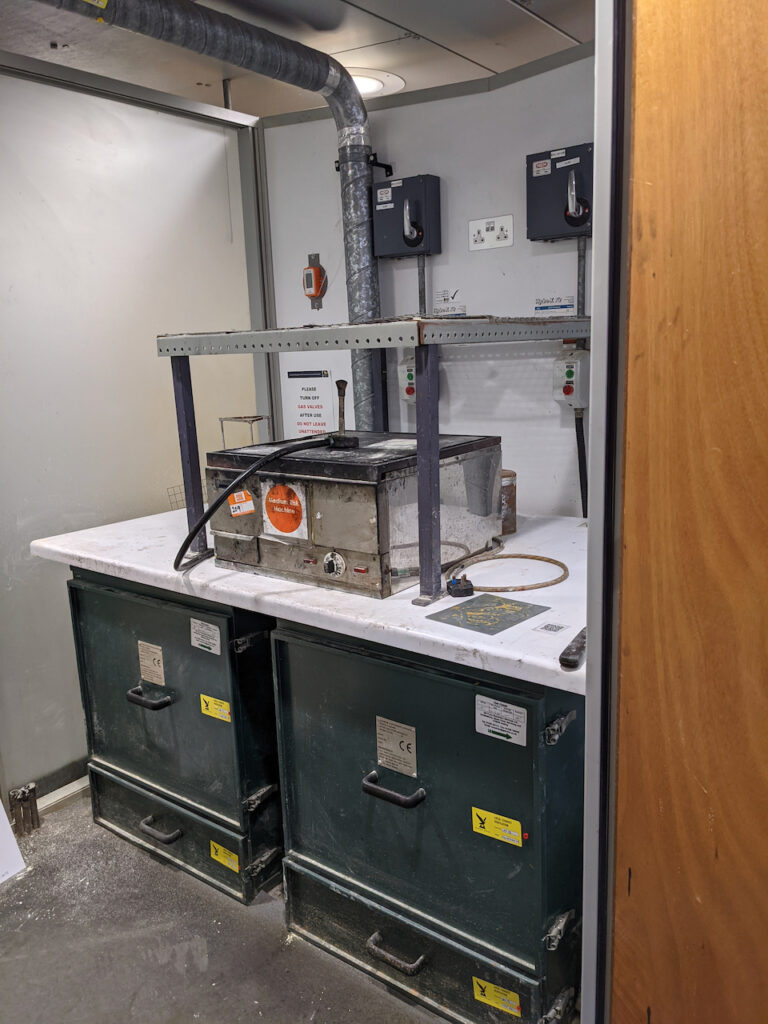
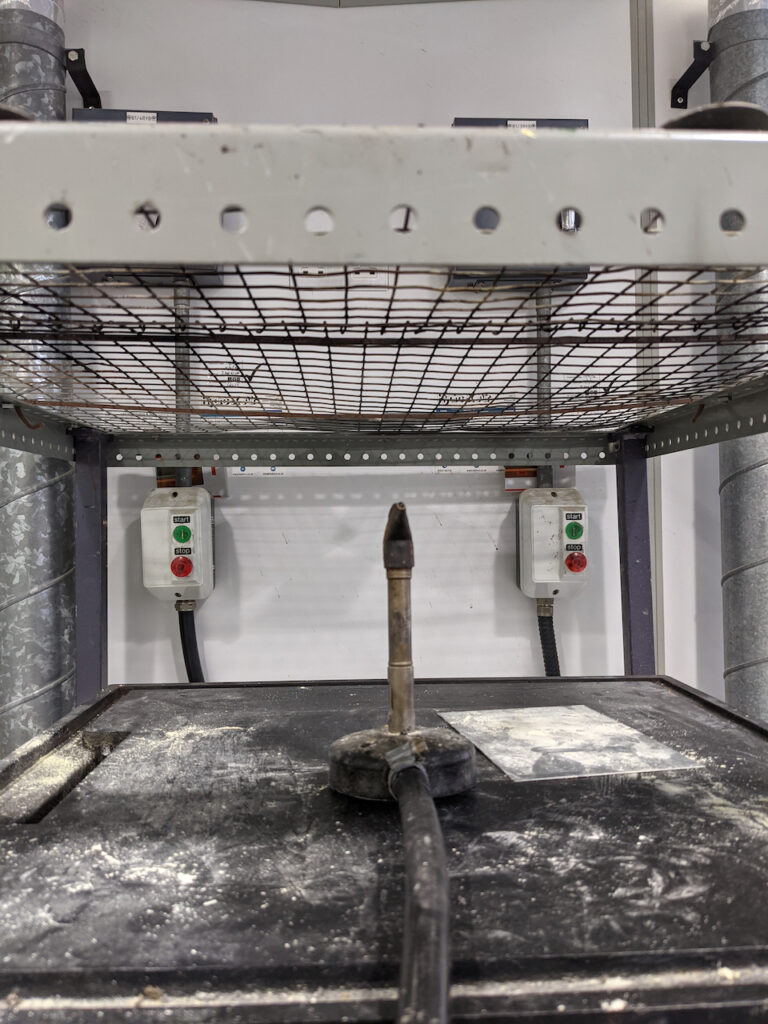
Aquatint is the most flexible and precise method of creating tones in etching. Grains of rosin are dusted onto a plate, then melted slightly, so that the rosin can create tiny islands for acid to bite around. Aquatint provides a texture, or tooth, to hold the ink. If the rosin grains are evenly spaced, and you bite the plate deeply in an acid bath, aquatint can provide a black like no other in any medium. In addition, once you have an aquatint ground on the plate, you can create many different tones of gray and many different kinds of marks. Crown Point Press.
https://magical-secrets.com/process/aquatint/
Rosin The hard, friable pitch, or resin, of pine trees that is ground into particles and used in the aquatint process as an acid-resistant ground.
The slides below show the process from shaking up the rosin in a dedicated box for a 5 min dust through to the heating of the rosin on the plate from below with a Bunsen burner.














